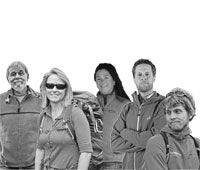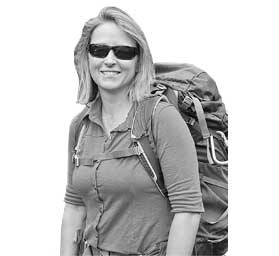Expert Panel: Instant Upgrades

'BP0912SKIL_ExpertPanel_200x170'
Expert
Problem
Solution
FIRST AIDBuck Tilton
Co-founder, Wilderness Medicine Institute

A chipped or broken tooth
“If it doesn’t hurt, don’t worry about it on-trail; just see your dentist when you get home. If you’re in pain, you’ve probably exposed nerve-packed pulp under
your tooth’s enamel. Avoid chewing with the damaged tooth and use sugarless gum, wax, or a first-aid filling material called Cavit (available from dentists) to seal the tooth. You may have
to replace the covering several times a day. If there’s a lot of exposed pulp–and pain–you can cauterize the tissue with acetylsalicylic acid, aka aspirin. Break a pill into pieces
and hold one in place atop the nerve until the piece dissolves. It’ll be extremely painful for a minute, but that acid will kill nerve endings and you’ll be pain-free for 24 hours or more.
Repeat the process until you can get out of the woods, and get straight into a dentist’s chair. ”
Expert
Problem
Solution
GEARKristin Hostetter
BACKPACKER Gear Editor

Chafing under your pack’s hipbelt
“Make sure your pack’s torso length is set so that your load rests on your hips, and alleviate hot spots before they flare up by adjusting hipbelt tightness and stabilizer straps
throughout the day–while hiking and at rest stops. Wrinkled fabric can also contribute to the rub. Try going commando, or inching your underwear’s waistband up so it’s not
directly under the weight. Also, assess your pants. Are belt loops or seams positioned where your pack hits? You may be able to remove the loops yourself by cutting a few threads with your
knife or multitool scissors. If not, before your next trip, swap your pants out for a model that’s streamlined through the waist and hips.”
Expert
Problem
Solution
NAVIGATIONAndrew Matranga
BACKPACKER Map Editor

Your GPS burns through batteries
“If you’re getting less than 15 hours of use on a single set, you can improve performance. To maximize power, use long-lasting lithium-ion cells and keep them at moderate temperatures.
On hot days, tuck your GPS out of direct sunlight; on cold days, carry it in your coat to protect it from freezing (high-sensitivity receivers won’t lose reception). Also, try these
power-conserving tips to eke out at least a weekend trip from one set of cells.
>> Reduce trackpoint resolution to around 1 point per 1,000 feet or quarter of a mile.
>> Turn off your receiver where navigation is straightforward, and under heavy forest cover or in canyons, where it will waste power searching for an insufficient signal.
>> Reduce the backlight brightness and the timer for the display screen’s dimmer.
>> Disable power drains like the electronic barometer, altimeter, and compass if you’re not actively using them to find your way.”
Expert
Problem
Solution
NUTRITIONClaudia Pearson
NOLS Rations Manager

Lack of appetite–and hence zero energy–on hot-weather hikes
“Metabolizing food raises your body’s core temperature, so when you’re hiking hard in hot weather, your appetite decreases in an effort to help you stay cool. But during strenuous
hikes, you need to eat regularly to stay fueled and avoid bonking–no matter how small your appetite. Set a scheduled snack time for every 60 to 90 minutes of hiking, and eat at least 100
calories at each break. Supplement dehydrated foods with durable fresh ones that will be more appetizing and have a high water content (oranges, carrots, cucumbers). Eat salty foods like tortillas,
broth, and crackers to replace sodium lost through heavy sweating; reduce high-fat and high-protein foods like cheese, jerky, and nuts, which can speed dehydration (or eat them late in the evening).”
Expert
Problem
Solution
ENDURANCELuke Nelson
Ultra runner and ski mountaineering champ

Blistered feet during a high-mileage trek
“Condition your feet to handle long days by training in the same socks and shoes that you plan to use during the endurance trek, and by leaving them on for several hours before and after
workouts. Also, protect against hot spots by applying a skin lubricant like Vaseline to high-friction areas–the balls of your feet and heels– before you start hiking, and by covering
problem areas with duct tape if you feel a hot spot forming. Optimize recovery by cleaning your feet and soaking them daily in cold water for at least 10 minutes. After that, elevate your feet and
stay off of them as much as possible between stages of your hike.”
Blister treatment Prevention didn’t work? Learn how to treat blisters to reduce pain and speed healingClick Here.

Three BACKPACKER staffers will apply Nelson’s foot-saving advice at the Grand 2 Grand Ultra trail race September 23-29; Click Here for details.